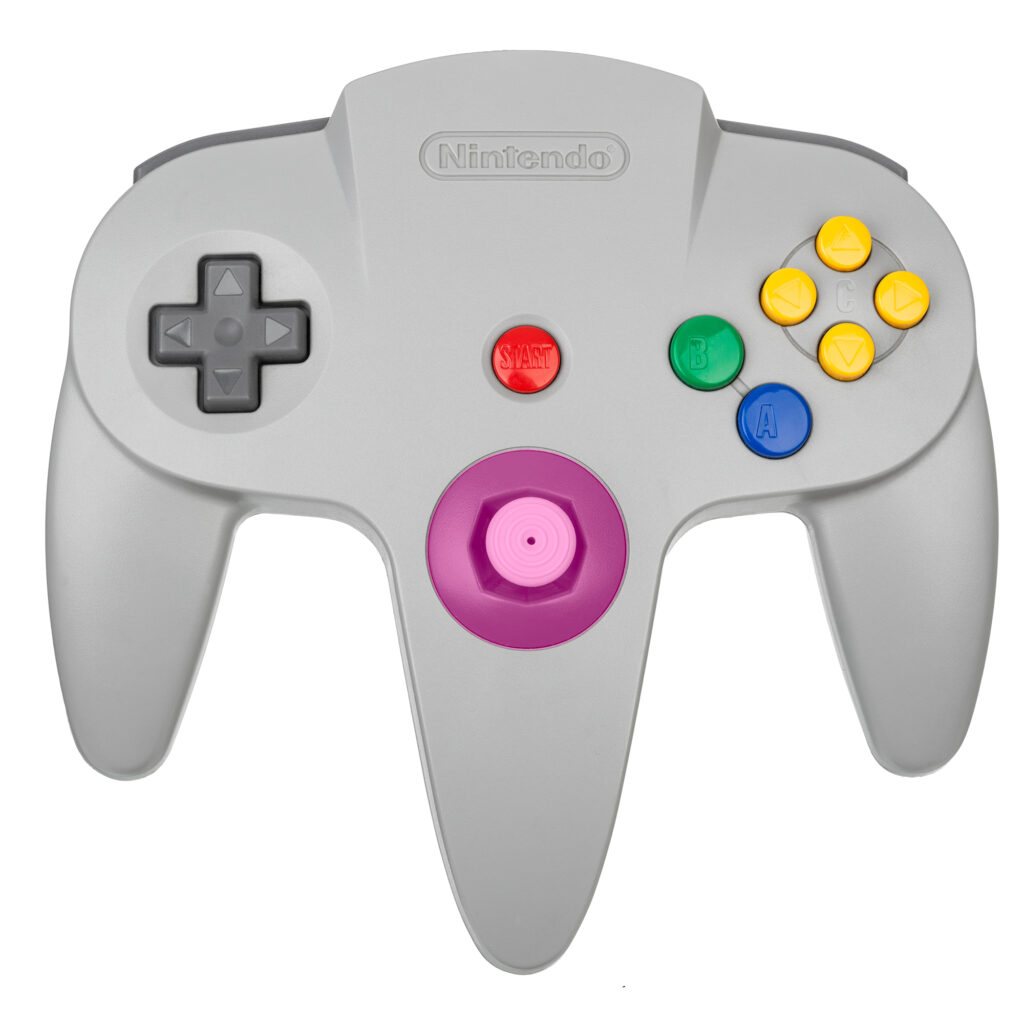History

The Nintendo 64 was released in 1996 as the direct successor of Nintendo’s wildly popular Super Nintendo Entertainment System. It was initially released June 23rd in Japan, September 29th in North America and March 1st for the rest of the world.
Its codename during development was “Project Reality,” named for the “Reality Immersion Technology” set of core components developed by SGI in partnership with Nintendo.
Unlike competing home consoles of the generation which used optical disc media, the Nintendo 64 maintained the use of cartridge based games from previous generations. It was the last main home console to use cartridges until the Nintendo Switch.
Launch titles available across the various regions were Super Mario 64, Pilotwings 64, Saikyō Habu Shōgi, Star Wars: Shadows of the Empire and Turok: Dinosaur Hunter.
The console had a lifespan up until late 2003, at which point its successor the Nintendo GameCube had been out for two years.

Detailed Tech Specs
It is powered by an NEC VR4300 CPU running at 93.75MHz along with the Reality Coprocessor GPU running at 62.5MHz.
The Reality Coprocessor is split internally into two major components, the Reality Display Processor and the Reality Signal Processor.
The RDP and RSP work in tandem to handle the mathematical calculations for 3D geometry and subsequently rastering them into pixels for display.
The high performance of the RCP was also used for performing audio functions, playing back audio from games using multiple software codecs or uncompressed data. It is capable of a maximum sampling rate of 48kHz with 16-bit audio, and producing up to 100 channels at a time, however most games were reduced to much lower audio quality due to storage constraints of the cartridge based media.
Unlike other consoles of the era, the N64 used 4.5MB of Rambus RDRAM that was shared amongst all system components, known as a unified memory architecture.
This system RAM was expandable to 9MB by use of an Expansion Pak accessory, which was required for some games to operate.

Due to the paired nature of RDRAM modules, a Jumper Pak was provided from the factory and either it or an Expansion Pak were required for console operation.
Video output of the N64 used the same Multi Out connector from the SNES, and was capable of providing both composite and S-Video output. The highest resolution available for games was 480i for NTSC and 576i for PAL regions, though most games used a 240p or 288p resolution for higher performance.
Common Failures and Repairs

The most common failure mode we have seen on a Nintendo 64 is simply the Expansion Pak or the factory Jumper Pak having a loosened connection, causing a black screen and no audio when switched on. Carefully removing and reinstalling the Pak often fixes this.
The analog control stick was also known for wearing down over time through use, losing directionality and usefulness.
The only resolution for a work out analog stick is replacement, with either an original from another controller or one of the many third party replacements on the market.
No Power Light
If the red power light at the front of the console does not light when powering on the Nintendo 64, this can be a sign that the power supply has failed.
To verify, you can use a multimeter to measure the pins and ensure the voltages show match the map shown in the moulding on the power supply. If you find neither 3.3 or 12V available, it may have internally blown the fuse.
Be careful when attempting any repair within the power supply, and ensure it is completely unplugged before opening the unit. Mains power is not to be trifled with!
Preventative Maintenance

As with many consoles of this and earlier generations, one of the easiest forms of preventative maintenance to ensure they are kept alive is to replace the electrolytic capacitors inside the unit.
Having been manufactured between 1996 and 2003, the capacitors in all N64 units are now well beyond a typical expected lifespan of 15 years for most electrolytics, and likely to either already be failing or beginning to fail.
Common symptoms of failure are random crashes or degraded audio or video.
The Nintendo 64 uses surface-mount capacitors which does increase the level of difficulty of such a repair, but they are all quite easy to access and can be done without the need for special equipment or training.
Many images used in this article were from the Vanamo Online Game Museum
